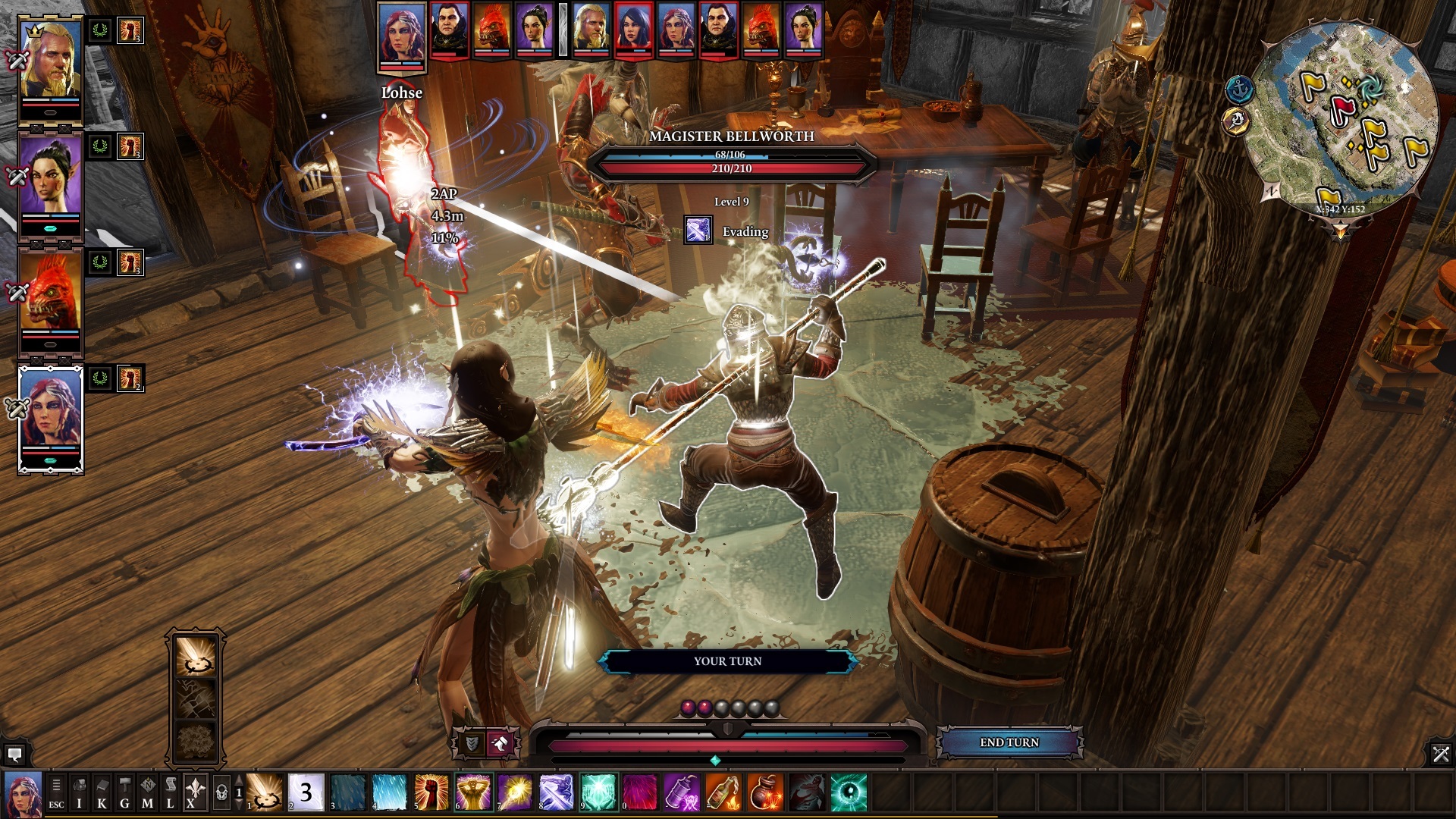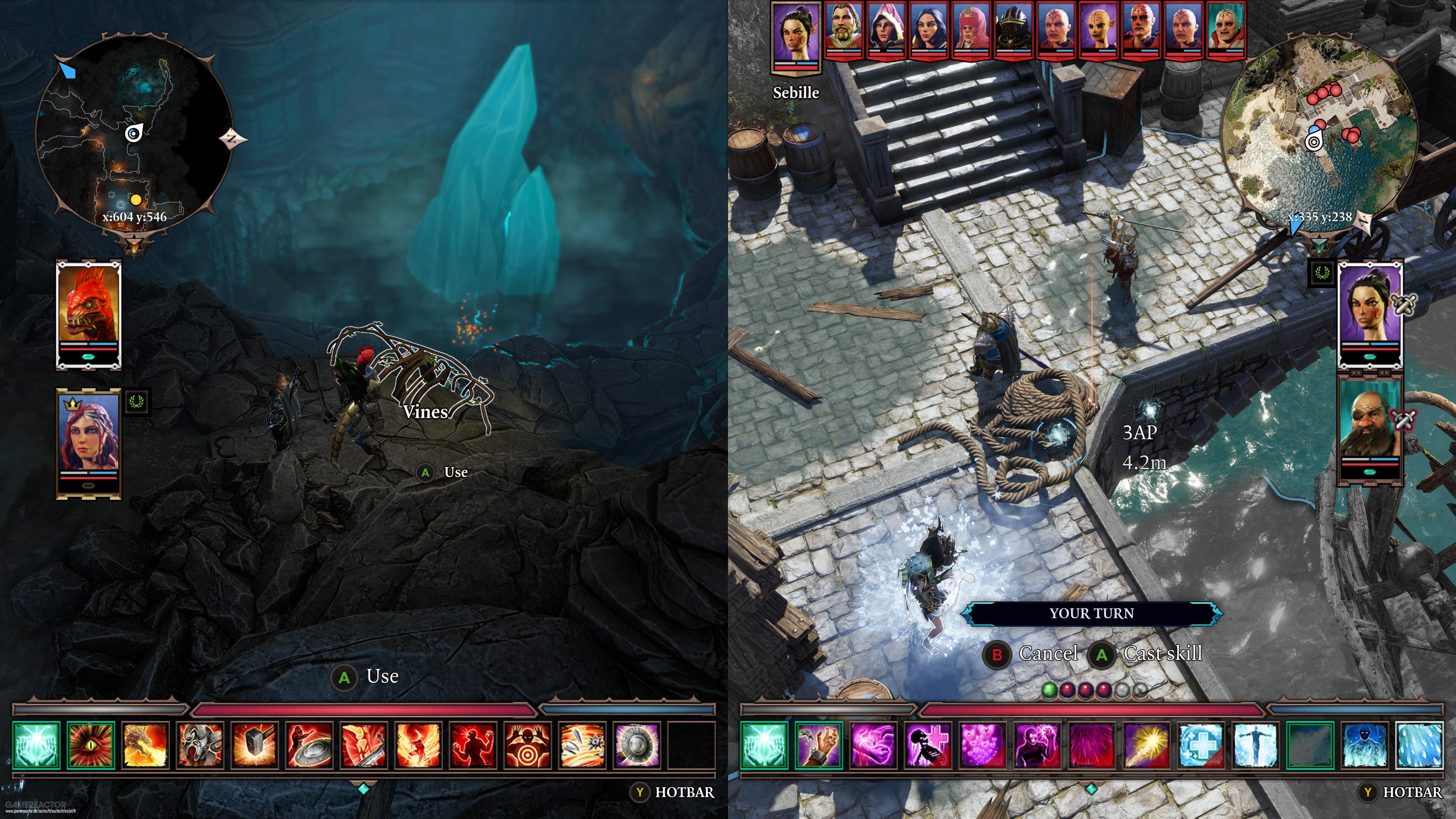
The Divinity: Original Sin games are of great value to me. They are an incredible feat of storytelling and strategic gameplay, and the second game in particular is one of my most played games of all time. The board game adaptation allows us to revisit the world of Rivellon in a tabletop environment, transitioning from screen to real life surprisingly well.
Divinity Original Sin: The Board Game is an epic adventure, and by that I mean long. My games typically lasted 1-3 hours, but they were all part of a long, sprawling campaign. Players maintain the same character while building a repertoire of skills and items, “saving” them between sessions just like in the video game. The board game resembles a Dungeons & Dragons campaign, but with everything you love about Original Sin 2.
And you’re not wrong: the game is clearly aimed at video game fans. Familiar characters like the Red Prince and Sebile are present in miniature form (along with a few new faces), the combat system abstracts the game’s armor, action points, and even basic puddle mechanics, and the story follows a very similar course. You start the campaign as usual as a prisoner on a ship. The threats are different and you’ll encounter some new characters, so it’s not a 1:1 remake of the other game, but the atmosphere is definitely familiar.
This board game is a retelling of the story of Divinity: Original Sin 2, but with changes so it doesn’t feel like a remake. Overall, it covers the same general narrative and territory as the first two acts of Divinity: Original Sin 2, and although there’s no further progression and you’re capped at level 5, this is enough content for a long campaign full of triumphs and drama. A fitting ending.
Though similar in structure to D&D, this is a more traditional board game. The entire action takes place in a book called The Divine Atlas, which acts as the “board”, and each location in the game is a double-page spread full of lore, instructions, and tiles for your characters to move around. Gameplay is divided into rounds of exploration or combat, and most locations must be “solved” by finding a way forward within a certain number of rounds. This is made easier by cards on individual tiles on the board, revealing what the character will find there and the challenges they must overcome to progress, be it skill-based dice rolls or combat encounters.

The fights themselves are the highlight. As in the video game, it is turn-based, with both sides getting their turn at the same time. Player characters are given a pool of action points that can be used to attack, move, and use items, while enemy movements are determined by some dice rolls, simulating the random behavior of computer characters well, but occasionally resulting in action. It seems a bit too unpredictable, as the dice roll determines whether weakened characters are dealt with intelligently or ignored completely. This creates a play style that favors less risky actions and tries to compensate for all possible outcomes, even if they are unlikely.
This would normally be frustrating, but Original Sin is an inherently cooperative game. You’re encouraged to plan your moves in cooperation with your allies, carefully choosing your moves and actions in turns and changing them on the fly if a bad roll disrupts your strategy. This way, Divinity’s multiplayer experience is beautifully preserved.
Bosses are a whole other matter. While minions are simple enemies that aren’t much of a threat, board game bosses have their own deck of attacks to use against you, making luck play an even bigger role than usual. Example: Slaine, the Winter Dragon. The fight with this beast takes place on a 3×3 grid, and Slaine’s frost breath only attacks certain tiles, determined by the roll of the dice. Some disciplines are more dangerous than others, with success dependent on chance. But how to overcome this challenge? Awesome.
As you’d expect from a Divinity game, your character is pretty much a blank slate. When creating your character, you can choose from a variety of weapons and skills to create your own build. Rather than investing points into stats, you get stronger at pre-determined points in the campaign, reducing complexity and allowing a bit more flexibility when choosing new skills. Group synergy is encouraged. In my campaign, I played with someone who used electric spells. I got a rain spell that created watery terrain on the field, which made my friend’s electric spells more powerful. It was an aha moment when he realized that’s what this series is about, even though he’d never played a Divinity game before. Items were swapped and we were all awarded new resources as we received them to see who could best utilize them, and we became an attacking team that was effectively death-dealing. Slaine didn’t stand a chance.

Fortunately, you slowly get to grips with the mechanics and steps of the game. This is unusual for board games, which are usually dominated by huge and impressive rulebooks. In fact, you have no choice but to slowly get used to it. The introductory phase of the game (which covers the entire short first act of Original Sin 2) is practically separate from the main campaign and is carefully constructed to eliminate many coincidences that could derail your plans. . She teaches you the structure of the game and offers a brief encounter with a preset character that is easy to play. Once you have completed the tutorial, the game encourages you to create a new character from scratch, and the campaign begins in earnest.
The game box is further divided into halves, one containing everything you need to complete the tutorial and the other containing everything else, with a very clear sheet saying “Once you have completed the tutorial, do not look under this sheet. Be warned” The words separate them from each other. I was very grateful for the large size of the box. It’s filled with a lot of little things and more cards than I’ve ever seen in a game before. The detailed tutorial that the game itself advertises as essential is a crucial piece of the puzzle. Throwing players into a campaign without it would be disastrous.
If I had one criticism, it’s that the layout is incredibly space-hungry. My dining room table is pretty small, so I had to spread half the deck I used and two character sheets out on the bench next to me. This is certainly an insult to those without a large playing area, but it should be fine for those familiar with games like Scythe and Gloomhaven. Still, I’m very impressed with Divinity Original Sin: The Board Game. It’s a fantastic adaptation of the popular video game, taking enough liberties and changing enough aspects of the classic storyline to make it feel like a beast entirely its own.

Leave a Reply